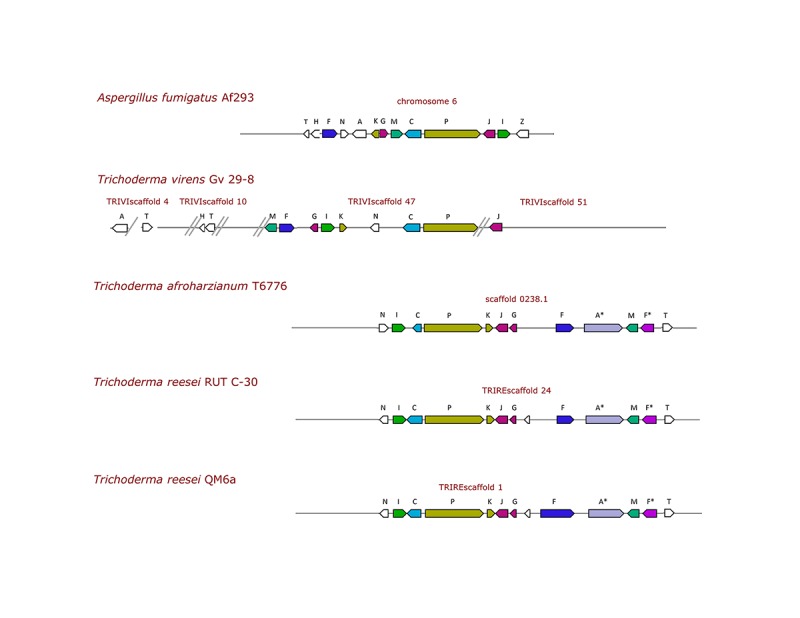FIGURE 1.

Schematic view of the gliotoxin biosynthesis genes (GT-BG) in A. fumigatus and representative Trichoderma spp. strains. Arrows represent the genes, and their size is proportional to the length of the corresponding genomic region. The GT-BG are gliZ (Z), zinc finger transcription factor; gliI (I), 1-aminocyclopropane-1-carboxylate synthase; gliJ (J), a dipeptidase; gliP (P), a two-module non-ribosomal peptide synthetase (NRPS); gliC (C), gliF (F), two cytochrome P450 monooxygenases; gliF* (F*), second putative ortholog; gliM (M), O-methyltransferase; gliG (G), a glutathione-S-transferase; gliK (K), a cyclotransferase (GGCT); gliA (A) or gliA* (A*), respectively, major facilitator superfamily (MFS) or ATP-binding cassette (ABC) transporter; gliN (N), a methyltransferase; gliT (T), a GT oxidase; gliH (H), coding a conserved hypothetical protein. The scaffolds containing the GT-BG are separated by double lines at their extremities; a single line indicates that the genes are present in the same scaffold but not clustered.
